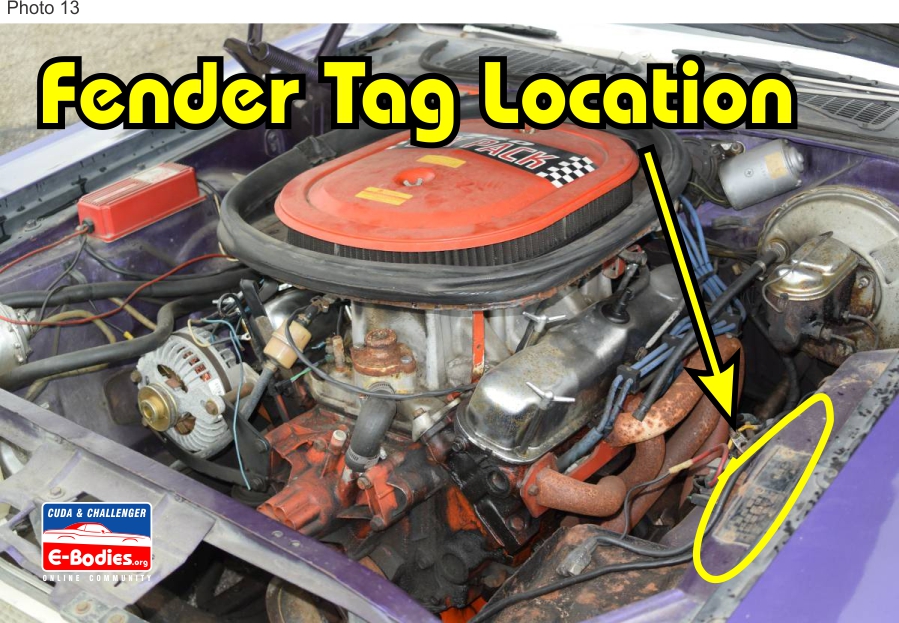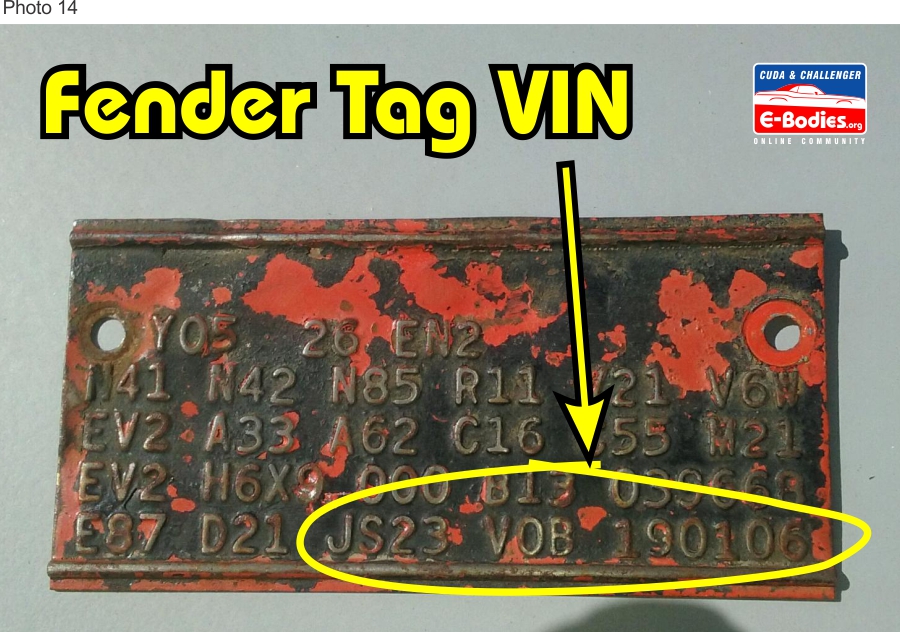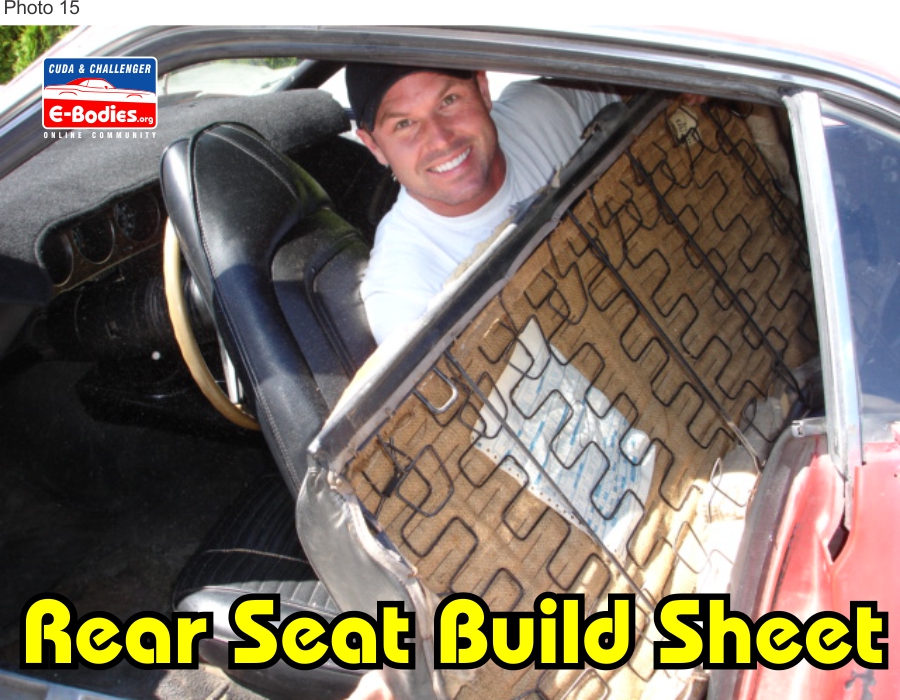#7 FENDER TAG: The E-Body Fender Tag is what E-Body enthusiasts dream about. It’s a small metal tag with a bunch of embossed numbers and letters which is attached under the hood. This small tag lists the vehicle’s original VIN, scheduled build date, body color, engine, transmission, and other important options. It’s a very valuable piece of the cars documentation. It’s been said that having an original Fender Tag can increase the price of an E-Body upwards of 5 to 10%. That’s a lot of money for a small metal tag. That’s precisely why it’s not uncommon for some to make fake Fender Tags in hopes of profiting off someone unable to read or authenticate it. But don’t worry, we’re here to help you understand what an original Fender Tag looks like and how to avoid buying a fake version.
The finer Details of an E-Body Fender Tag (coming soon)
Let’s start by looking at where you’ll find the Fender Tag. On all years of E-Bodies, the Fender Tag was screwed (with two small Phillips head screws) to the drivers side inner fender. See photo 13.

Most E-Bodies had one Fender Tag. Special cars like T/A’s, AAR’s and later built Hemi’s would have an extra Tag to help identify their special features. If a car had enough factory ordered options it could have a second Fender Tag of codes. Finding an E-Body with two Fender Tags is rare and highly desirable. After locating the Fender Tag(s) look at the bottom lower right hand corner where you will see the full VIN. Take a look at photo 14.

For the Fender Tag to be a match this VIN needs to match the Dash VIN perfectly. Click this link to decode your full Fender Tag.
Click HERE to use the FENDER TAG Decoder
#8 BUILD SHEET: The Build Sheet (or as it’s printed on the form “Broadcast” sheet) is a piece of paper that can sometimes be found in E-Bodies. Build Sheets list each and every option that was installed on the vehicle when new and was meant to be internal to the factory. Liken it to a birth certificate since it instructed factory workers on how exactly to build the car and what options to install. Everything from the dealership vehicle order number to the time it was scheduled to go down the line is contained on the Build Sheet. From the smallest label in the engine bay to the gear ratio in the axle, the Build Sheet lists everything there is to know about the car. However, not every single E-Body left the factory with a Build Sheet. The odds of the car having a Build Sheet depend on the factory the E-Body was assembled. E-Bodies were built at two locations, Hamtramck, MI (indicated by the letter “B” in the 7th spot of the VIN) and in Los Angeles, CA (indicated by the letter “E” in the 7th spot of the VIN). In assembly, each vehicle had lots of Build Sheets to let each department know its specifications. From what I can tell Build Sheets were often discarded in a few places in the car, perhaps as a way to get rid of them. It’s believed that most of the Build Sheets placed in E-Bodies came from the upholstery department. With over a hundred thousand vehicles built at each of these factories every year, placing Build Sheets in the car may have been the easiest way to dispose of them. No one knows for sure why some cars left the factory with Build Sheets while others did not. A pattern has been established however, most E-Bodies built in Los Angeles did not leave the factory with a Build Sheet. While most E-Bodies built in Hamtramck left with at least one Build Sheet and sometimes lucky owners found two or more! But regardless of where the E-Body was assembled it’s best to check for a Build Sheet. The most likely place for a Build Sheet to be hidden is in the seats springs. See photo 15 & 16


Take the back cover off the front bucket seats and peek in to see if there is one tucked in the springs. Also check under the front seats and in both the upper and lower sections of the rear seats. By far those are the most common place to find Build Sheets. I’ve also found them taped up on top of the glove box, under the carpet, under the package tray and in the headliner.